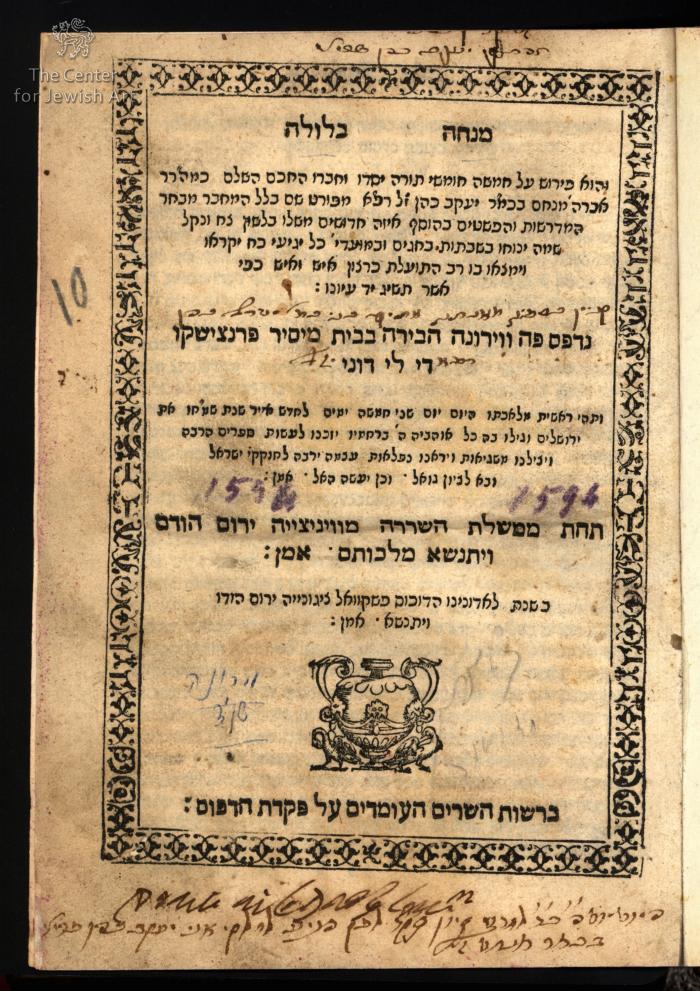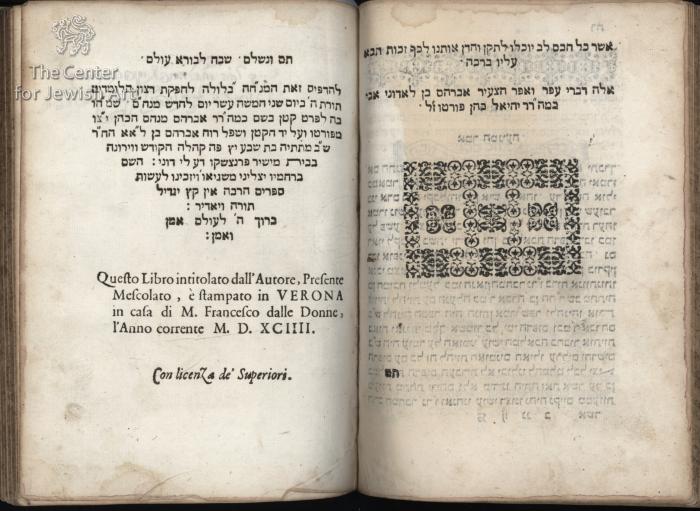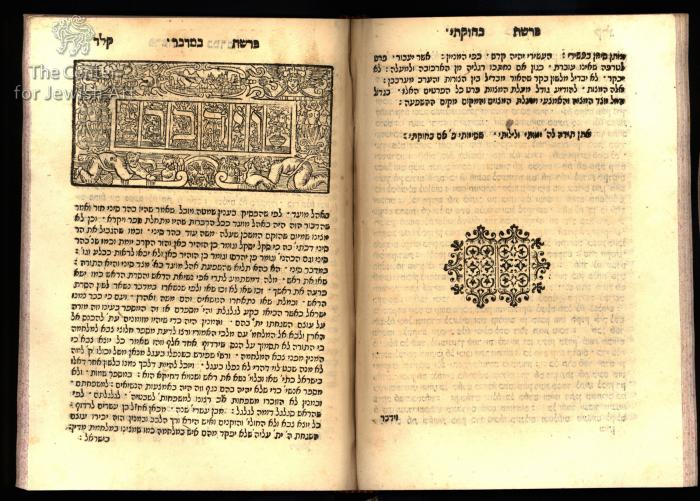Obj. ID: 37699 Minchah be-Lulah by Avraham Menachem Hacohen Rapa, Verona, 1594

sub-set tree:
This text was prepared by William Gross:
First edition of this commentary, based on Midrashim, on the Chumash by R. Abraham Porto. Whilst a young man, R. Porto was apprenticed as a proof-reader to the House of Bragadin in Venice. There he witnessed the violent burning of the Talmud pursuant to the Papal Bull of 1553. On page 203r of the present work, he records the tragic event and notes his decision to commemorate the anniversary of the auto-da-fי as a day of fasting for the rest of his life.
Abraham Porto was one of the progenitors of the celebrated Rapaport dynasty of Rabbinic scholars. His family came to Italy from Lublin, and he himself was bornin Porto. R. Porto's family coat-of-arms appears prominently at the end of the present work: it includes a pair of Priestly hands raised in blessing and a black raven, which refers to the Middle High German word "rappe" - raven - the German family name. Indeed, the author refers to himself at the end of his introduction as Benei Ha'Orvim - "of the children of the ravens."
Prior to holding rabbinic positions, R. Porto worked in Venice as a proofreader. By 1571, he was already serving as a rabbi in Cremona, and became the ruling Halakhic authority there by 1574. In the wake of a deadly epidemic in 1575, R. Avraham was appointed one of three 'Health Ministers' in Cremona. In 1585, he left Cremona to assume the position of the assistant to the elderly rabbi of Verona, whom he then succeeded one year later. In 1592, he resigned his position due to infirmity and old age and left Verona.
The volume was printed in Verona, the last Italian city in which a Hebrew press was established in the 16th century. Here, in 1594 and 1595 Abraham Basevi printed a handful of Hebrew and Yiddish books in the Christian printing house of Francesco delle Donne.
Mincha Belula, commentary on the Five Books of the Torah, by R. Avraham Menachem Rappa of Porto (Rappaport). Verona: Francesco dalle Donne, [1594]. Stated on title page: "In the year of our master, His Majesty the Duke Pasquale Cicogna..." (Doge of Venice during 1585-1595); but it is not clear if the inscription is alluding to the year of printing. The coat-of-arms of the Rappaport family is printed on p. 207b, depicting a raven and a pair of Priestly hands raised in blessing (symbolizing the family's status as Kohanim). An apology by the proofreader appears on p. 208, entitled Amar HaMagia (אמר המגיעה - misspelled, this mistake was corrected in some copies)
The book is bound with three additional books from Venice of the same period in the original binding: B.2243, B.2244, B.2245







